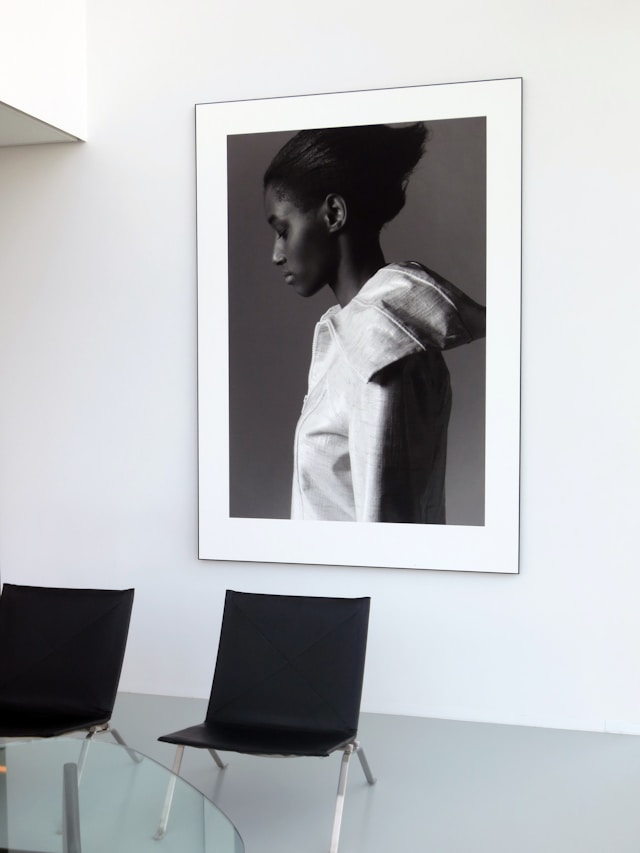Portraits are a unique, powerful addition to any home, bringing both character and a personal touch to your walls. These artistic representations of a person capture expressions, personality, and important moments that tell a story, adding depth and emotion to a space. They can also provide a visual narrative, often becoming conversation pieces that make guests feel welcome and at ease.
As a decorative element, portraits also provide variety. They can be created through different mediums, from painted or sketched artwork to photographs. If you’re considering getting professional portraits to hang in your home, look for photography studios London-based photographers trust. This way, you’ll find a location suitable for intimate portraits.
Now, let’s explore some tips for using portraits effectively to transform a blank wall into a space that feels like home.
1. Plan the Layout of Your Portraits
Before anything else, declutter your walls of anything you do not need, then consider the size and scale of the wall where the portraits will be displayed. A smaller wall might benefit from a single large portrait or a simple arrangement of a few smaller ones, while a larger wall could accommodate a gallery of various pieces. Be sure to measure your space and experiment with layouts on the floor first to visualise the design and identify which layout best suits the room’s style and proportions.
2. Select the Best Frames for Portraits
Frames that suit both the portrait and the room’s décor are also essential to creating a cohesive look. From a design perspective, frames serve as the bridge between the portrait and the room; thus, matching the style of the frame to your interior can make a significant difference. Traditional, elaborate frames, like those made from wood or gilded in gold, offer a classic look and pair well with painted portraits or vintage family photographs. These frames look particularly beautiful in period-themed or traditionally decorated homes.
On the other hand, modern frames, such as sleek black, metallic, or even frameless options, are ideal for contemporary homes where simplicity is key. A black frame can provide a stark elegance, while metallic frames lend a subtle shine that complements minimalist spaces.
3. Display Different Types of Portraits
Another way to use portraits as wall decor is by combining a variety of portraits to add depth to the space. Try using family photos, painted portraits, and even commissioned artwork to give a dynamic and personal touch to any room. For instance, mixing casual family photos taken with a smartphone camera with professionally shot portraits creates a comforting balance between warmth and formality, which makes the display more relatable and engaging.
On the other hand, incorporating paintings alongside photographs can add a layer of sophistication, as painted portraits offer texture and depth that photos often don’t. You can use one or two standout paintings in a mix of family or travel photos to act as focal points, drawing the eye and creating a sense of hierarchy within the gallery.
4. Mix Portraits, Photos, Art, and Other Objects
Portraits don’t always need to stand alone. In fact, they can be even more captivating when paired with other wall décor. For instance, adding a small mirror or unique shelf amidst a portrait wall can provide functional décor that also enhances visual appeal. Sculptural wall décor, such as metal or ceramic art pieces, can also add texture and break up the two-dimensional feel of the display.
Similarly, if you have a collection of mementos from your travels or have sentimental gifts from loved ones, consider incorporating them alongside your portraits. Place travel souvenirs or heirlooms within the gallery to create a narrative that reflects your personality and history. This combination of portraits, art, and decorative objects allows you to tell a story through your décor, turning a blank wall into a reflection of your life’s journey.
5. Play with Sizes and Orientations
Experimenting with portrait sizes and orientations can also elevate a wall display, adding visual interest and breaking up monotony. Large portraits make a bold statement and serve as focal points, while smaller portraits can add detail and intricacy by filling in gaps and creating a layered effect. The combination of small and large pieces gives the eye a path to follow, making the display feel dynamic.
Additionally, display both landscape and portrait orientations within your gallery for another dimension of visual variety. Alternating orientations creates a rhythm that’s pleasing to the eye, drawing attention across the display in a natural, flowing pattern.
6. Consider Lighting and Placement
Lastly, lighting plays a crucial role in setting the mood of a portrait display and ensuring your pieces receive the attention they deserve. Accent lighting, like picture lights or wall sconces, can be positioned above or beside each portrait, to create focused lighting that adds a touch of drama. Soft, warm lighting works especially well to highlight portraits without causing glare, which can be particularly helpful in creating a cosy, inviting atmosphere.
Placement is another consideration. While hallways and staircases are popular choices for portrait displays as they naturally lead the eye along the wall, placing portraits above sofas or headboards creates a warm, personal focal point in living rooms and bedrooms.
Using portraits as wall décor is a brilliant way to bring warmth and character into your home. If you want to create a display that’s as unique as you are, consider the suggestions mentioned above. Whether you’re showcasing family memories, fine art, or a blend of both, portraits can help transform your walls into a beautiful reflection of your style and story.

